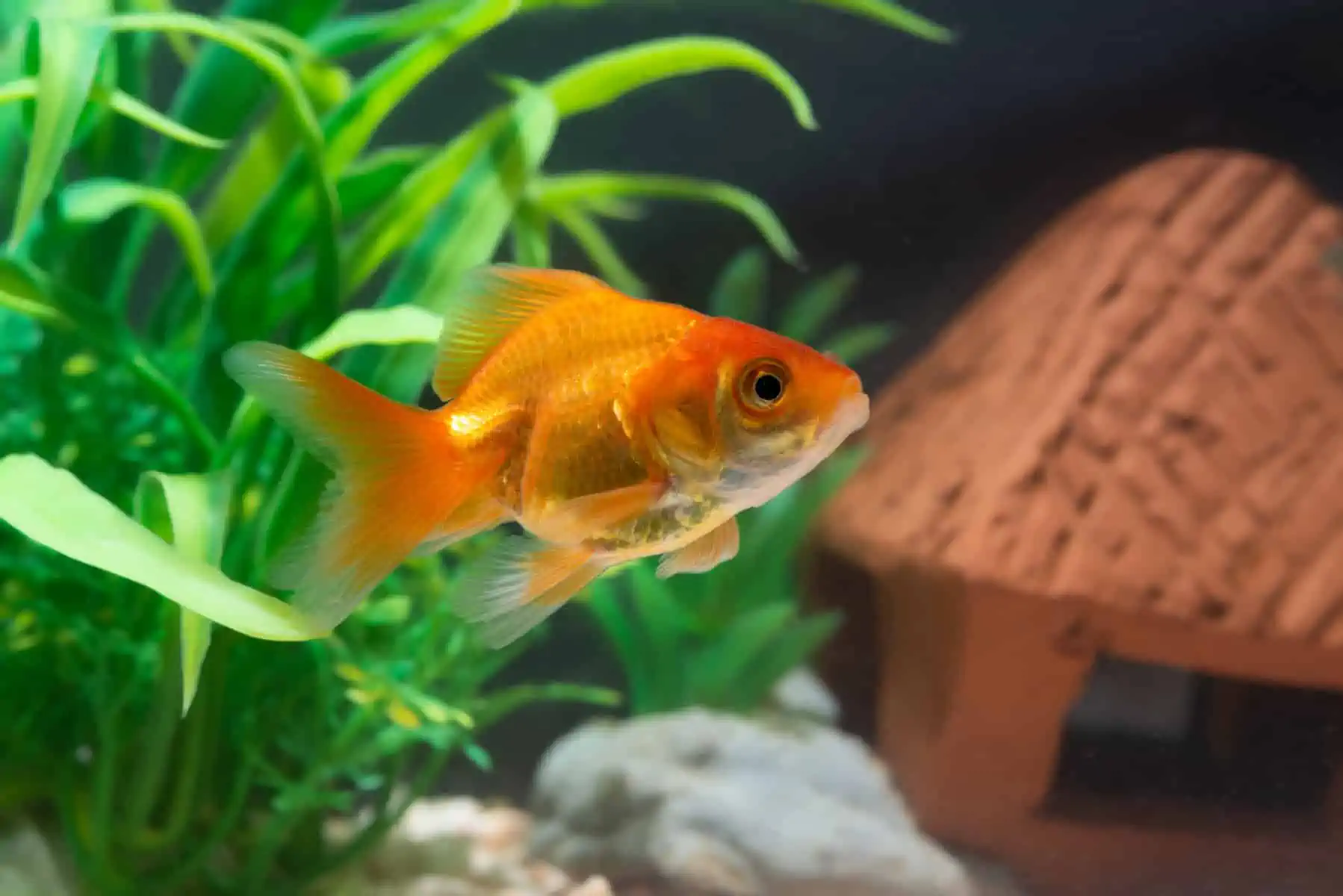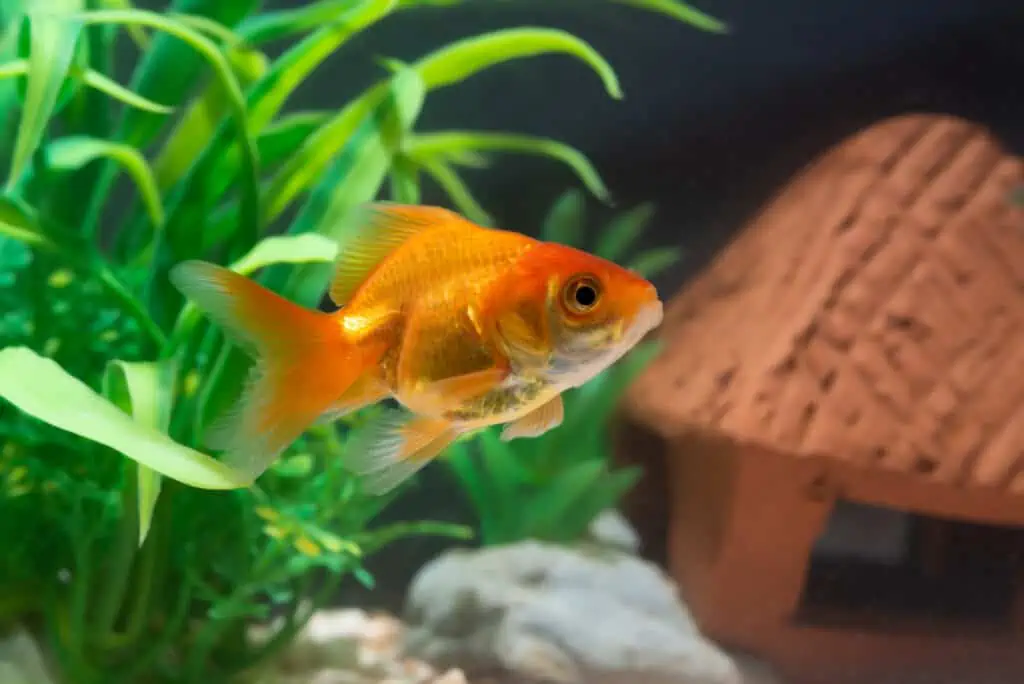Goldfish are popular among aquarium fish but are notoriously messy. They produce lots of fish waste!
As unpleasant as it may seem, goldfish poop can indicate the status of their health. It can tell you whether your goldfish has an infection, digestive issue, or other health issues.
Why is it important to keep an eye on your goldfish’s poop? Let’s find out!
How Often Should a Goldfish Poop?
How much a goldfish poops will depend on how much food they eat. If they eat the same amount of food every day, they should poop once or twice every two days.
Goldfish Poop Colors and What They Mean
Like other animals, goldfish do poop, but unlike other animals, they don’t have a stomach. Digestion happens in the intestine instead.
Once nutrients are absorbed from the intestine, they become waste. Goldfish excrete waste through the anus, which is located near the back of their tail.
Here are the different goldfish poop colors and what they mean for the health of your fish.
Same Color as the Food They’ve Eaten
Healthy goldfish poop should look like what they are eating. If they’re on a high-quality diet of pellets, their poop will look pellet-like.
Goldfish that eat plants will have green poop, and those that eat meat will have pink poop.
For texture, a goldfish’s poop should be chunky and small and sink to the tank’s bottom.
White Poop
White poop is usually due to a poor diet. A mix of live quality food, veggies, and tropical flakes will give your goldfish proper nutrition.
Brown or Red Poop
This type of poop is usually solid, sinks to the bottom of the tank, and is usually caused by a bacterial infection. Antibiotics can remedy these mild infections.
Black Poop
A goldfish will have black poop when eating dead worms or taking medication with this side effect.
Green Poop
Green poop is fairly normal due to eating green veggies or green pellets.
Types of Goldfish Poop Textures and What They Mean
Besides different colors, goldfish poop can also have different types of textures, and they all mean different things.
White, Stringy Poop
White and stringy goldfish poop signals poor diet and bacterial or internal parasite infection.
Your fish could be eating an improper diet or could be plagued by roundworms or tapeworms.
Bacterial infections can also cause bloat, lack of appetite, and lethargy. This type of poop can be treated with fish antibiotics.
To treat white, stringy poop, follow these tips:
Adjust Their Diet
It’s best to feed your fish two to three times a day in small amounts. They also need a varied diet to get all the nutrients they need to stay healthy.
Make a Tank Cleaning Schedule
You’ll need to provide a stable environment for your goldfish to thrive. Ammonia is poisonous to goldfish, and its buildup can lead to death. Your tank and substrate need to be cleaned at least every four to six weeks with 10 to 15 percent weekly water changes.
Give an Anti-parasitic
An anti-parasite solution will help eliminate parasites infecting your fish. Get a product that treats internal and external parasites. Quarantining may be necessary during treatment.
Quarantine
Quarantining your fish can help to control the treatment of your fish. Putting your sick fish in a new tank can make treatment more manageable and protect the rest of your fish from infection.
Regularly Check Your Fish’s Condition
Treatment will usually take two to three weeks. Depending on the fish’s age, they may recover more quickly.
Ensure the parasites are completely gone before relocating your fish to their regular tank.
Transparent Poop
Transparent poop is a signal that your goldfish isn’t being fed enough. If they aren’t getting enough nutrients, their poop will become transparent.
Giving more foods with high protein and plant matter can prevent transparent poop.
Long, String-Like Poop
Long poop, like a string, is a sign that your goldfish is being overfed. Overfeeding can lead to problems with digestion and constipation. Uneaten foods in your tank water can also lead to a rise in ammonia levels which can lead to toxic ammonia poisoning.
This poop can also mean that your goldfish has a bacterial or parasitic infection. Bacterial infections can be caused by improper fish diet, injury, and dirty water conditions.
When goldfish have a parasite infection, they will often have an inflamed anus, especially if they have a roundworm infection. If this isn’t the case, they are likely infested with flagellates.
Thick, Long Poop
When a goldfish’s poop is long and thick, they are usually constipated. When goldfish don’t get enough fiber, they can become constipated.
You can prevent constipation by feeding the right amount of food and not overfeeding.
Thick, long goldfish poop can also indicate limited oxygen in your goldfish aquarium. An air stone can help to aerate the water.
Checking the water temperature can also help. Warm water has lower oxygen levels than colder water.
Why Does My Goldfish’s Poop Get Stuck?
If you see that your goldfish’s poop is hanging out outside its body, overfeeding is a common reason. Fasting your goldfish for a few days can help clear their system.
Why Are There Multiple Strands of Poop?
When your goldfish’s poop has more than one strand, they likely have a common fish parasite, carnallanus worms. Fish with this parasite will have red or brown poop.
Goldfish Stool and Air Bubbles

Reduced oxygen levels in the tank can lead to air bubbles in the stool. This can happen from overcrowded tanks or a higher temperature than the correct water temperature.
This can be treated by moving your fish to a larger tank and adding an air bubbler to help water movement. You can also reduce the water temperature.
My Goldfish Is Not Pooping Regularly
If your goldfish isn’t pooping regularly, it can be because of constipation.
Improper diet, insufficient swimming space, cold water temperature, or poor water quality can lead to constipation. Other symptoms include bloating, loss of appetite, or clamped fins.
To cure constipation in your goldfish, take the following steps:
- Feed them a cooked, unshelled pea to increase fiber intake
- Fast your goldfish for a day or two
- Feed only twice a day
- Give variety to their diet
- Keep impeccable water conditions
- Move them to a larger tank
- Keep the temperature above 50 degrees Fahrenheit
- Treat the tank with Epsom Salts
How To Treat Constipation With Epsom Salts
When constipation is severe, Epsom salt can be used to treat it. This should be more of a last resort method.
To use Epsom salt, take aquarium water and place it into a container and add 1 teaspoon of Epsom salt for every 5 gallons of water.
Once the Epsom salt and water are mixed, they can be added to the tank. Leave your goldfish in the tank for three to four days with the water before completely changing the aquarium water.
Make sure to remove the chemical filter from the tank to prevent it from removing the Epsom salt before it should.
My Goldfish Is Producing Excessive Waste
If your goldfish is producing a lot of waste, it could be because of overfeeding. Meals should last two minutes, and they should be fed twice daily.
Excessive waste can also be a sign of subpar water conditions.
Why Is The Water Brown?
You may observe that the water behind your goldfish is tinted brown. If this happens, they likely have diarrhea.
There isn’t much that can be done to treat this, but to prevent it, perform frequent water cleanings and provide a varied diet.
Goldfish and Pee
Since goldfish do poop, do they pee? The answer is no. They do not need to. Mammals pee to release ammonia from their bodies, but fish release it through their gills when breathing.
Removing Poop From Your Goldfish Tank
Goldfish can fill your tank with fish waste and cause ammonia, nitrate, and harmful bacteria buildup.
Vacuum your substrate regularly and change the water frequently. Cleaning your filter bi-weekly will also help to prevent buildup in the tank.
Will Goldfish Eat Their Own Stool?
Usually, goldfish don’t eat their own stool. Goldfish sometimes eat their poop on accident or if they are extremely hungry. If they eat it by accident, they often spit it out.
Conclusion
As with any pet, poop is part of the equation. Your goldfish’s poop can be a great indicator of their health.
Bacterial and parasitic infections can all be diagnosed through your goldfish’s poop.
Your fish will remain healthy and happy if you provide a properly balanced diet and good water conditions. For more information about the importance of goldfish poop, watch this video.


